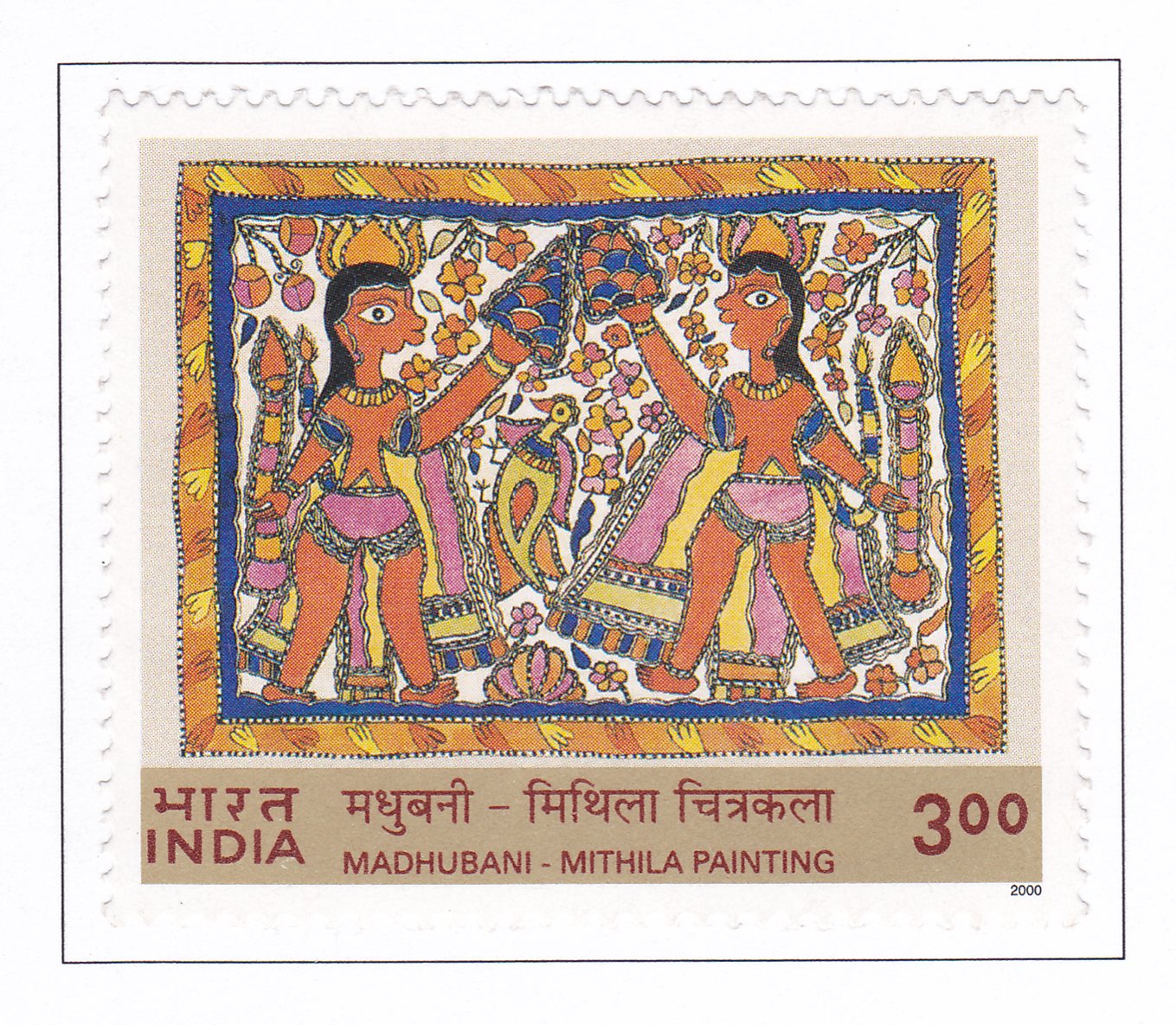“Bali and Sugriva” (Sanjula)

Technical Data
| Stamp Set | Madhubani Mithila Paintings |
|---|---|
| Date of Issue | October 15, 2000 |
| Denomination | Rs. 3 |
| Quantity | 3,000,000 |
| Perforation | comb 13½ |
| Printer | Calcutta Security Printers Ltd |
| Watermark | No Watermark |
| Colors | Multicolor |
| Catalog Codes |
Michel IN 1786 Stamp Number IN 1852 Yvert et Tellier IN 1552 Stanley Gibbons IN 1957 |
| Themes | Art | Paintings |
Table of Contents
Commemorative Stamp Set: “Bali and Sugriva” (Sanjula Devi)
Design Elements:
- Mythological Theme: The stamp design centers around the depiction of the famous battle between Bali and Sugriva, inspired by the epic Ramayana.
- Traditional Madhubani Art: The painting, crafted by Smt. Sanjula Devi, utilizes bold lines, intricate geometric patterns, and vibrant colors typical of the Madhubani style.
- Floral and Animal Motifs: Surrounding the central figures are natural motifs like lotus flowers, birds, and animals, symbolizing harmony with nature.
- Symbolism: The depiction of Bali and Sugriva represents justice and the moral victory of good over evil.
Cultural and Historical Significance:
- Rooted in the Ramayana: The story of Bali and Sugriva is deeply embedded in Indian mythology, representing key cultural values such as loyalty, justice, and the triumph of righteousness.
- Madhubani Art Tradition: The stamp highlights one of India’s most renowned folk art forms, Madhubani painting, which has been passed down through generations of women in the Mithila region.
- Rural Social Framework: The art style depicted in the stamp reflects the cultural and social framework of rural Bihar, where Madhubani paintings were historically created as expressions of daily life and ritual celebrations.
Usage:
- Commemorative: The stamp is part of a commemorative set, celebrating the artistic and cultural heritage of India.
- Cultural Recognition: It serves to honor the Madhubani art form and preserve its connection to Indian mythology.
- Philatelic Collection: Designed for philatelists, art enthusiasts, and cultural historians, this stamp set represents a valuable addition to commemorative stamp collections.
Importance of the Commemorative Stamp Set:
- Promotion of Folk Art: By featuring traditional art forms like Madhubani, this stamp set preserves and promotes cultural heritage at a national level.
- Mythological Education: The depiction of mythological characters from the Ramayana serves to educate the public about India’s rich storytelling traditions.
- National Identity: The stamps strengthen national pride by celebrating India’s artistic diversity and historical depth.
Example of the Stamp Design:
- The stamp features Bali and Sugriva in combat, framed by traditional Madhubani floral and animal motifs. The figures are drawn with bold black outlines and filled with earthy, vibrant colors, typical of natural pigments used in the original art form. The intricacy of the design captures the ethos of Madhubani art while narrating an iconic episode from the Ramayana.
The Commemorative Stamp Set Might Include:
- Other Mythological Scenes: Alongside “Bali and Sugriva,” the set could include scenes from other pivotal moments in the Ramayana or Mahabharata, each illustrated by different Madhubani artists.
Significance:
This commemorative stamp set serves as a tribute to India’s mythological past, artistic heritage, and the rich tradition of Madhubani painting, promoting these cultural elements to a broader audience.
